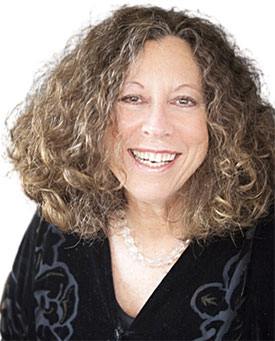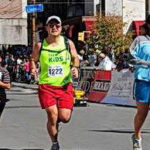 Susyn Reeve, Transformational Heart Healing coach, had her life informed by a question she wrote in her journal at age 14, “What would the world be like if everyone loved themselves?” Her newest book, Heart Healing: The Power of Forgiveness to Heal a Broken Heart is a guide for people to free their heart and mind from brokenheartedness through the power of forgiveness.
Susyn Reeve, Transformational Heart Healing coach, had her life informed by a question she wrote in her journal at age 14, “What would the world be like if everyone loved themselves?” Her newest book, Heart Healing: The Power of Forgiveness to Heal a Broken Heart is a guide for people to free their heart and mind from brokenheartedness through the power of forgiveness.
Stacey: What is Heart Healing?
Susyn: Think about what happens when someone has a heart attack. There is clogging of arteries, and the flow of blood stops to the heart. Similarly, when we don’t heal our emotional wounds from the disappointments, abuse and heartbreak we’ve experienced during our life, the flow of receiving and giving love is blocked. Heart Healing is about healing the wounds of the past and in the moment, so we wholeheartedly have access to love.
Stacey: How do we recognize these past wounds that are affecting us now?
Susyn: When heartbreak or unmet expectations occur in the present unhealed wounds of the past are triggered. I write about an unexpected break-up I had in Heart Healing. I was so in love and then my heart was broken. Clearly, a present situation like this can be exaggerated by the wounds of the past. We use the older circumstances of the brokenheartedness as evidence that “No matter what I do I’m not going to be happy”, or “It’s not safe to trust and open my heart to someone.”
Other ways to recognize our wounds is to notice how we feel. We may feel that no matter what we do, things don’t work out for us. We feel angry towards others and ourselves. We feel hopeless about life.
There is a physical part to it too. One of mine is that when I feel closed hearted and a need to protect myself, I start eating – binging. I start trying to fill the emptiness with food. Alternatively, others become addicted to substances, whether it’s alcohol or drugs. Some of us physically feel pain. Some of us isolate.
Stacey: What, specifically, can we do to help us identify our wounds?
Susyn: Here’s an exercise that I personally do and recommend to all my clients. When you’re feeling hopeless, betrayed, victim to your circumstance, a desire for revenge, resentful, or angry, complete these sentences:
When I am feeling______________________. I am believing______________________.
For the first part, “When I am feeling…” write down the emotional name of the feeling as well as the physical sensation. The second half is, “I am believing…” which could be about the circumstance, the people in the circumstance, or what you are believing about life. For example, when I am feeling betrayed, I have a knot in my stomach; I bite my nails; I can’t sleep. What I believe is that he or she lied to me again and can’t be trusted, or whatever I do, I can’t count on people. Next, look at your beliefs and ask yourself without judgment, “Do they serve me?” It’s an opportunity to look at the software of your mind. Not that you’ll be able to install new beliefs immediately, but to look at what they are as a starting point to transform your beliefs. These beliefs are the filters through which you experience life.
Stacey: Why is it important for us to heal our brokenheartedness?
Susyn: If we don’t heal our hearts, we keep repeating the same patterns over and over again. I like to think we are truly here to become masters of love, to learn about love, to learn about the virtues and embody them in our lives. So when we don’t heal our hearts, we are constricting the flow of love.
Stacey: How do we heal our hearts from a devastating loss?
Susyn: With a three-step model of transformation: awareness, choice, and change. I’m not saying this is easy to do because we need to acknowledge that we are angry, resentful or feel betrayed, alone, unloved, unworthy, undeserving. Heart Healing begins with the awareness of our feelings and expressing them — whether it’s letting out a scream, writing in a journal, taking a walk in nature, painting, dancing, punching a pillow, sharing feelings with a trusted friend, a family member, or a professional. We must start where we are.
The next step is making choices by asking ourselves, “Who do I want to be?” and “What do I desire?” Then choose to move in the direction of these answers. If I notice that the anger has surfaced again, rather than being angry and judgmental, I allow myself to feel it. Often for me, it’s writing my feelings in a journal. I really can’t stress the power of acknowledging our feelings and then taking a step in the direction of what we want.
Stacey: How do we use forgiveness to heal our hearts?
Susyn: Let’s talk about it regarding forgiving someone else first. I start with the understanding that in every moment each of us is doing the best we can based on our internal programming. I’m not condoning the hurtful behavior, instead expressing the understanding that whatever anybody does to us, they’re doing the best they know how to at that time.
When we don’t forgive, we use what they’ve done to us as evidence to prove that there is something wrong with us. So, you’re hurt, feel the hurt. If you’re angry, feel the anger. So often, when someone hurts us, we lash out in anger, and it’s hard for them to hear us. They become defensive. Our holding onto resentment means that feeling of resentment is living in our body. Holding onto rage means that rage is living in our body and that’s a disservice to ourselves.
The next part is forgiving ourselves, we hold onto our old story about not being enough. We hold onto the old stories of “I’m not worthy”; “I’m not deserving.” Continually judging ourselves as not worthy or not enough may happen in the moment. Once we’ve done it once though, what’s the reason to continue doing it? It’s that critical self-talk that until we become aware of it, runs on automatic.
Stacey: What are some of the red flags to let us know that we need to forgive?
Susyn: When you hear someone’s name and it triggers anger in you. You fall down the rabbit hole of the old story of what he or she did to you. When you are obsessed with the circumstances or the people involved in the situation and obsessed in a way that you have a knot in your stomach or palpitations. You can’t sleep. You’re drinking too much, using drugs, stuffing food down your throat, all to help you squash your feelings. You always complain when talking to friends.
I want to share one of the gifts of my spiritual journey. When I received this unexpected breakup e-mail from my former boyfriend, I was shocked. Two things came to my mind, “Obviously this was the best he could do because this is what he did.” The other is, “What is it about me that once again has me experiencing this feeling of being cast out?” I want to be clear that in that moment I had hurt feelings and was not openhearted. I knew though that if this was going on in the movie of my life, then there was something calling for me to look at the beliefs I had about being cast out.
I wrote about this experience in my book, and with therapy, that ticker tape of thought form turned into soft snowflakes that hit the ground and melted.
Stacey: That’s a lot of awareness.
Susyn: Yes, and it comes from a commitment that I made in the early 1970s to be free, which kicked off my spiritual journey. I learned that our thoughts create our reality.
Stacey: You recommend in your book to forgive ourselves as a starting place for all forgiveness. Why is that?
Susyn: Once we forgive ourselves, we build the muscle of compassion. We need to forgive ourselves for believing that we’re not enough, not worthy, or deserving. Knowing that we are worthy and deserving, gives us the courage to be authentic, to be vulnerable and to connect. Not only with our body, mind, and spirit but also truly connect with others. And isn’t that what we all want? That feeling of connection, of being seen?
Stacey: What is one practice that people can do to help generate Heart Healing?
Susyn: When you find yourself in the midst of pain and suffering, use the “Uncovering Our Beliefs” practice I mentioned earlier. The exercise includes acknowledging what you are feeling and then finding out what you believe. Because the only way to move from where we are to where we want to be is to start where we are. The exercise gives us the opportunity to look at our beliefs and then ask ourselves, “Does this serve me for who I truly want to be in the world?”
About Susyn Reeve
Susyn Reeve is a master Heart Healing coach with a wealth of experience as an executive coach, self-esteem expert, InterFaith Minister, and award-winning author. As an elder, she is committed to sharing the wisdom of her experience and being a mighty expression of Love in the world. She is a certified, Calling In “The One” coach. Her books include The Wholehearted Life and the best-seller, The Inspired Life. Her newest book is Heart Healing: The Power of Forgiveness to Heal a Broken Heart.
Visit Susyn’s website at www.SusynReeve.com. You can also view her Amazon author’s page here: http://bit.ly/SusynReeveInfo.






Stephanie – this is Susyn. I celebrate your courage and willingness to acknowledge your feelings. When I read your comment a principle from the martial art Akido popped into my mind, What you resist persists.
Thank you for this enlightening Q&A. Susyn has given me some great tools to practice heart healing and forgiveness. Sometimes, for me, it is easier to suppress my feelings and move on. Susyn writes “the power of acknowledging our feelings and then taking a step in the direction of what we want” is a healthy path that I will apply in my journey towards what I really want to be in this world!